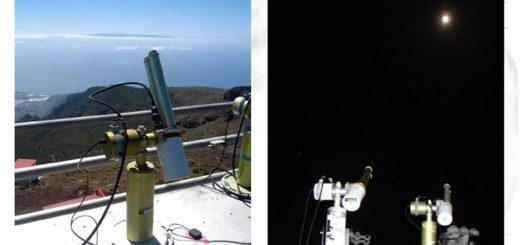Agreement between AEMET and the National Supercomputing Center (BSC-CNS) to accommodate the Regional WMO Center for the Sand and Dust Storm Warning, Advisory and Assessment System for Northern Africa, Near East and Europe
Last April 26 2010 saw the signing of the agreement between the State Meteorology Agency for Spain (AEMET) and the National Supercomputing Center-Barcelona Supercomputing Center (BSC-CNS) making Barcelona home to the Regional Center for the Sand and Dust Storm Warning, Advisory and Assessment System for Northern Africa, Near East and Europe.
The agreement was signed by the President of AEMET, Ricardo Garcia Herrera, and the Director of the BSC-CNS, Mateo Valero. The event was presided by the State Secretary of Climate Change, Teresa Ribera, and the Government’s Representative in Catalonia, Joan Rangel I Tarres. Subsequently, Dr Jose Maria Baldasano (Head of the Earth Sciences Department at the BSN-CNS) and Dr Emilio Cuevas-Agullo (Director of the AEMET Izaña Atmospheric Research Center) spoke about the Regional Center, its objectives, organization and activities.
At the signing ceremony, the State Secretary of Climate Change, Teresa Ribera, emphasized the capacity of Spain to respond to World Meteorology Organization’s request to head a project requiring extensive specialization and collaboration between some thirty organizations providing the center with observation data and research projects. The signing of this agreement makes Barcelona one of two host cities, the other being Beijing, where the Regional Center for Asia is already running, for the coordinated system of the World Meteorology Organization to carry out continuous monitoring, forecasting and assessment of sand and dust content in the atmosphere.
Atmospheric dust and sand constitute a major risk factor for the environment and health and is harmful to agriculture and air transport. Furthermore, is the cause of a marked impact on marine ecosystems and fisheries, as well as playing a major role in the climate. The Barcelona Center will bring together and process observation material from both earth and satellite stations. In this respect, there are already agreements of cooperation with the European Space Agency (ESA) and with EUMETSAT, the European consortium exploiting meteorological satellites. It will also bring together material obtained from numerical forecasting models. Once processed, the information will allow for more accurate and longer term forecasts of atmospheric dust and sand content. The products developed at the Barcelona Center will allow for improved assessment of air quality levels in Europe. However, the information is of particular interest to the Saharan and sub-Saharan African countries, where dust and sand storms pose a very serious health problem as well as being a great burden for the development of some financial sectors. In that respect, agreements have been reached on a variety of World Health Organization programs, particularly with MERIT, a project aiming to reduce the ravages of meningitis in sub-Saharan Africa every year.
The presentation on the organization, objectives and activities of the regional center can be downloaded here.

From the left to right: the BSC-CNS Associate Director, Francesc Subirada, the Government’s Representative in Catalonia, Joan Rangel I Tarres, the State Secretary of Climate Change, Teresa Ribera, the President of AEMET, Ricardo Garcia Herrera, the Head of the Earth Sciences Department at the BSN-CNS, Jose Maria Baldasano, the Director of the AEMET Izaña Atmospheric Research Center, Emilio Cuevas-Agulló, and the Director of the BSC-CNS, Mateo Valero.







